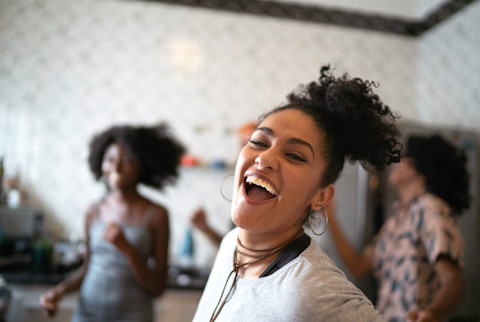The Longevity Habit We’ve Lost While Chasing Optimization

We’re living in the golden age of health optimization. We track our REM cycles, log macros, monitor blood glucose, and take supplements tailored to our DNA. Longevity has become a data-driven pursuit, and biohacking promises to give us control over every measurable aspect of aging.
But amid all the tracking, testing, and tinkering, one question is worth asking: Have we optimized ourselves into isolation?
Neuroscientist and medical doctor Tara Swart, M.D., Ph.D., thinks so. “Is biohacking more important than belonging? I think absolutely not,” she says.
Swart, who’s worked with top executives and longevity clinics around the world, says she’s less interested in perfecting metrics and more focused on the invisible interventions: connection to nature, art, beauty, and human connection.
Her point isn’t to dismiss data or optimization, but to reframe how we think about health. The most overlooked longevity hack, she suggests, might just be your social calendar.
The longevity interventions we’re ignoring
The modern health landscape rewards precision. We measure what we can quantify—steps, heart rate, blood biomarkers—but rarely do we measure the untrackable forces that sustain us: belonging, awe, joy, and connection.
Yet these are the same forces that have supported human health for millennia.
- A hug releases oxytocin and reduces cortisol, calming the stress response.
- A walk with a friend merges three proven longevity tools: movement, social connection, and nature exposure.
- A live concert synchronizes breathing and heart rhythms across a crowd, naturally regulating the nervous system through collective rhythm1.
We’ve evolved to thrive in community, but optimization culture often nudges us toward isolation. Health becomes a solo project—a lab experiment performed on ourselves.
When optimization crowds out connection
Biohacking isn’t the problem. It’s the imbalance.
The danger lies in prioritizing what’s trackable over what’s truly nourishing. You can hit your step count but miss the sunset. You can perfect your sleep hygiene, but forgo dinner with friends because it’s “too late to eat.” You can chase your perfect HRV score, but forget what it feels like to laugh until you cry.
When every decision is filtered through the lens of optimization—How will this affect my recovery? My blood sugar? My REM?—we risk shrinking our lives down to what can be measured. And yet, the very experiences that make us most alive often live outside that data: the unplanned, the unquantified, the deeply human.
We’re told longevity comes from control, but the truth is, many of the experiences that make us most alive require letting go—of schedules, of routines, of control itself.
The science of what we can’t measure
We often think of health as a collection of metrics—blood markers, sleep cycles, heart rates—but as Swart points out, the most powerful human data points can’t be graphed.
This may sound abstract, but science is starting to catch up. Research shows that awe—whether experienced through nature, music, or art—lowers inflammatory markers and strengthens vagal tone, improving heart rate variability. Studies consistently find that people with strong social bonds live longer, while loneliness carries a mortality risk comparable to smoking 15 cigarettes2 a day.
In other words, our most meaningful health inputs don’t always come from a lab—they come from life itself.
And while technology can now estimate our biological age through DNA methylation clocks, it can’t quantify our emotional age—our capacity for joy, curiosity, and connection. Those are the quiet metrics that sustain vitality long after the novelty of optimization fades.
The takeaway
True health isn’t found in the extremes. It’s the harmony between optimization and connection, between self-discipline and surrender.
Yes, track your sleep. Lift weights. Take your supplements. But also, linger over dinner with friends. Get lost in a museum. Watch the sunrise without documenting it. Dance, sing, listen, touch.
Our ancestors didn’t have wearables, but they had rituals, laughter, storytelling, and beauty—all of which supported the nervous system, reduced stress, and kept communities thriving.
This is the both/and approach to longevity: use the tools of modern science, but don’t lose sight of the immeasurable ones.
Because health isn’t only about extending the number of years in your life—it’s about expanding the life in those years.
